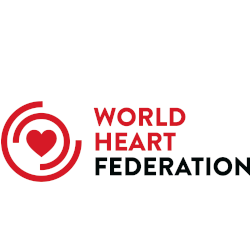Original Research
Prevalence and Risk Factors of Embolic Cerebrovascular Events Associated With Chagas Heart Disease
Abstract
Background: Patients with Chagas disease are at increased risk for stroke that may result in major clinical disability and death. Identification of risk factors involved in the genesis of thromboembolic events related to this disease may lead to improved therapeutic decision making and outcomes.
Objectives: This study sought to assess the prevalence of ischemic cerebrovascular events (ICE) among patients with Chagas heart disease and to identify the risk factors associated with cardioembolism in this population.
Methods: This study involved 330 patients, 193 were men (58%), with a mean age of 49 ± 12 years with Chagas disease classified in the chronic cardiac form of the disease. Comprehensive echocardiography was performed to search a substrate for cardioembolic events, especially apical aneurysm and intracavitary thrombus.
Results: Most of the patients were classified as New York Heart Association classes I or II (75%) with mean left ventricular (LV) ejection fraction of 39 ± 14%. Sixty-seven patients had a previous ICE with the overall prevalence of 20%. Apical aneurysms were detected in 128 patients (39%), whereas LV mural thrombi were found in 48 patients (15%). In multivariate analysis including the potential predictors of ICE, apical aneurysm (adjusted odds ratio [OR]: 2.19, 95% confidence interval [CI]: 1.11 to 4.34; p = 0.024) and LV thrombus (adjusted OR: 2.43, 95% CI: 1.09 to 5.42; p = 0.030) emerged as important determinants of ICE, after adjusting for anticoagulation therapy.
Conclusions: In a selected population referred to a tertiary center for Chagas disease that included patients with different severities of cardiac involvement, the prevalence of ICE was 20%. The presence of apical aneurysm and intracavitary thrombus were independently associated with ICE, after adjustment for other risk factors for stroke.
Highlights
- Chagas disease is a risk factor for stroke.
- Stroke can be the first clinical manifestation of the Chagas disease.
- Cardioembolism is the main mechanism of stroke in Chagas disease.
- Left ventricular apical aneurysm and thrombus are associated with ischemic cerebrovascular events in Chagas heart disease.
- Transthoracic echocardiography can identify patients at risk of ischemic cerebrovascular events.


